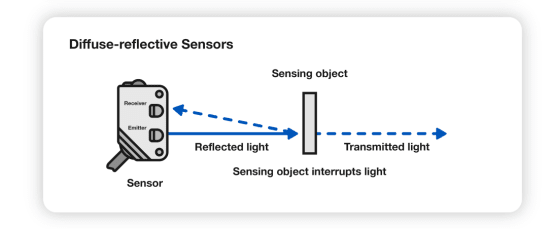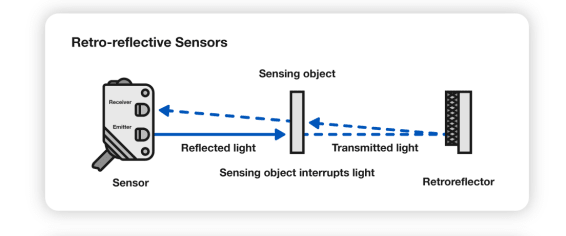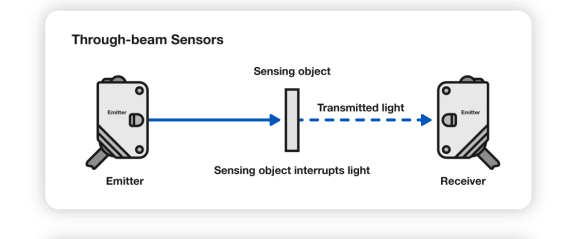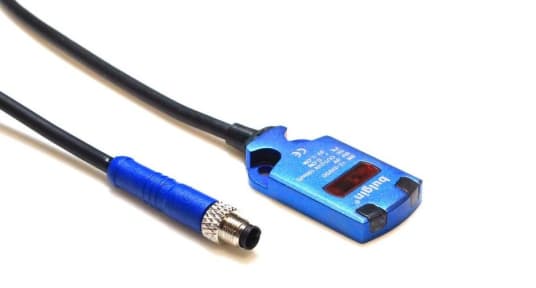Seven uses for photoelectric sensors
Follow articleHow do you feel about this article? Help us to provide better content for you.
Thank you! Your feedback has been received.
There was a problem submitting your feedback, please try again later.
What do you think of this article?
The photoelectric sensors market is expected to boom to more than $2 billion by 2025, all driven in part by the rise of the Internet of Things (IoT). They have uses in plenty of different applications and industries, often used in manufacturing and packaging; they have some significant advantages over other sensors.
How photoelectric sensors work
Basically, this type of sensor detects visible or infrared light emitted from a transmitter. It senses how much light is received but also how much has been blocked or reflected; it can determine the presence or absence of an object. A perfect example would be on a production line.
In comparison to other types of sensors, photoelectric sensors can detect objects from relatively far away. They also provide accurate results, fast. Unlike some other types of sensors, they do not require contact with another object. This improves reliability and can pretty much detect almost any kind of item, regardless of its materials.
There are three main types of photoelectric sensors in common use:
Diffuse
A light beam is sent towards the object of interest, and the sensor detects reflected light.
Retroreflective
Light is sent towards a reflector, and the sensor detects the reflected light – an object being detected may block the transmitted or reflected light.
Through-beam
Light is sent to a separate receiver, and the object of interest blocks the transmitted beam.
Within these main types, there are various different kinds of sensors with specialized uses. For example, some sensors can suppress the background, making it easier to detect an object close to reflective surroundings.
Applications for photoelectric sensors
The full applications list for photoelectric sensors is too long to list off in one article, so we’ve chosen seven fitting examples.
Checking objects on production lines or conveyors: photoelectric sensors can detect items’ sizes to spot any errors, or simply spot their absence, as well as picking up problems like misaligned caps on bottles. They are widely used in the food and pharmaceutical industries, and in packaging plants.
Counting small objects: in some production environments, small items will fall from a vibrating conveyor belt into a packaging system or bag – and a photoelectric sensor can count them.
Detecting colours: by scanning independently in red, green and blue light, with applications in multiple processes in the printing and packaging sectors.
Monitoring bigger areas for objects with light grids: instead of using multiple sensors, a ‘light grid’ uses parallel beams of light to cover a two-dimensional area.
Measuring distance: with multiple sensors, a triangulation process compares reflected laser beams and can be used to accurately determine position and distance, for example, to check the location of manufacturing systems, or in automated transport applications.
Logistics and materials handling: automated warehouses with robotic pickers or trucks rely on position and object sensing to operate efficiently and safely.
Automatic doors: in buildings or public transport, photoelectric sensors detect when someone is standing by a door.
Reliable sensing
More applications for photoelectric sensors could be listed, but it is significant that a lot of them are in industrial or manufacturing settings – environments in these applications can be harsh which requirements the key components to be rugged, robust and reliable.
To meet these demands, Bulgin's slimline photoelectric sensor range provides a cost-effective and flexible solution, with high levels of mechanical and electrical stability.
Bulgin Photoelectric Sensor
A simple and secure design enables a watertight and dustproof seal to any standard M5 interface. The sensors are made with a robust Stainless Steel 316 case, sealed to IP67, making them well-suited to manufacturing and industrial automation operations.
Product codes: SLLP3002M5, SLDP3002M5, SLLN3002M5, SLDN3002M5, SLLP4002M5, SLDP4002M5, SLLN4002M5, SLDN4002M5, SLLP3002CL, SLDP3002CL, SLLN3002CL, SLDN3002CL, SLLP4002CL, SLDP4002CL, SLLN4002CL, SLDN4002CL
For more information, visit https://www.bulgin.com/en/products/range/sensors.html





